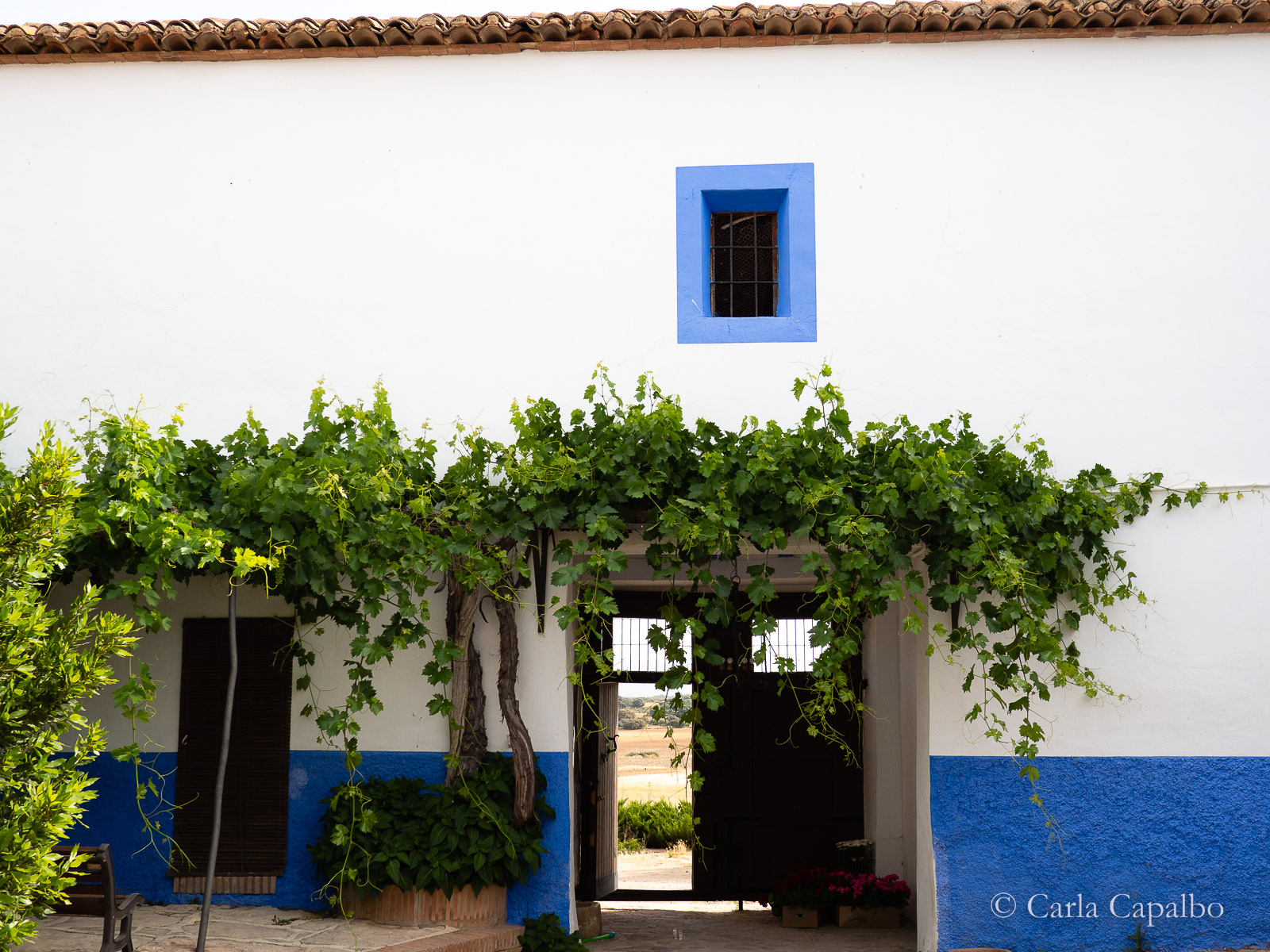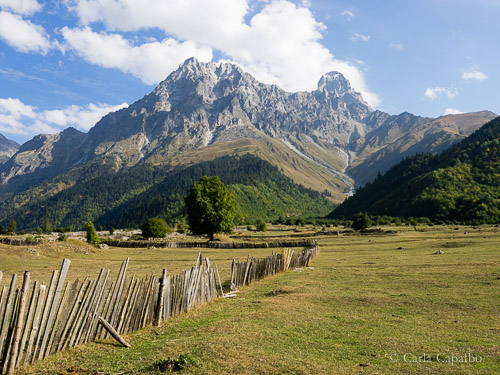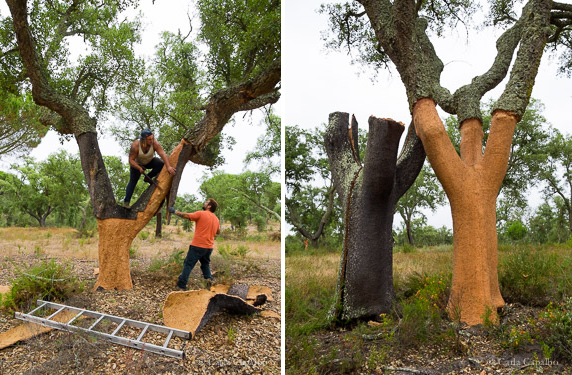On perfumes and pears
October 18, 2011
Driving at night has some advantages. You can use your nose to describe the passing countryside even if you can’t actually see it. Crossing northern France in the dark, I could smell the changes in the landscape: the wet earth of crops that had just been watered, the animalesque pong of fields being fertilized, the sharp acrid stench of landfill dumps. Even a biscuit factory whose sugary warmth lingered in the car long after I’d passed it.

Tartufaio Alberto helps his dog Allen retrieve a burried truffle
Perfumes come out at night, like mushrooms or truffles in the woods, but so far this autumn has been a poor one for legions of frustrated fungaioli and tartufai who are praying for a good downpour to hurry their precious quarries from the ground. I went truffle hunting near Alba just as the annual truffle fair was getting under way there, but we found nothing much to sniff at. Trained dogs can smell the gasses truffles emit from many metres away, but this time they only found a couple of stunted truffles the size of peanuts. And as for mushrooms: your nose can tell immediately if there are any about in the woods. So far, there aren’t.
What’s bad for the funghi is good for the grapes. I had my first of the year: an explosively aromatic bunch of black muscat grapes I bought in Reims. Well worth waiting for. I ate grapes again in Piemonte, this time right from the vines. If you walk in the vineyards after the harvest, you can usually find tiny bunchlets that were not ripe enough to be picked with the main crop but that ripen fast once the big bunches have been cut away.
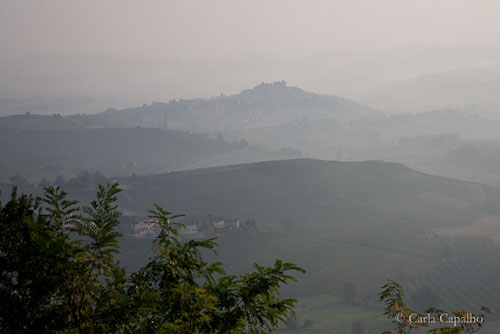
The Langhe hills, foggy in the morning
The Langhe hills were their enigmatic selves, producing plenty of nebbia for the Nebbiolo, foggy mist for foggy grapes. I discovered a talented young chef in Cuneo, at restaurant Delle Antiche Contrade. Juri Chiotti comes from a nearby mountain valley and is successfully revisiting the cucina povera his grandmother cooked for him as a child with what he describes as ‘Occitane’ flavours. He lifts braised beef cheek with a twist of lemon and marjoram, and serves it with coarse, native polenta. He makes rustic ‘cruzet’ pasta from indigenous flour. His pear cake plays on giving the small local variety called Tetti di Dronero three different textures, from crunchy to crisp to vinously mellow. Bravo!
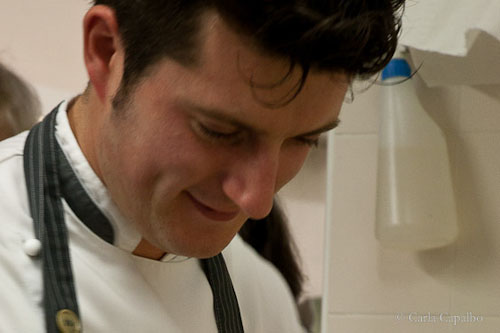
Chef Juri Chiotti
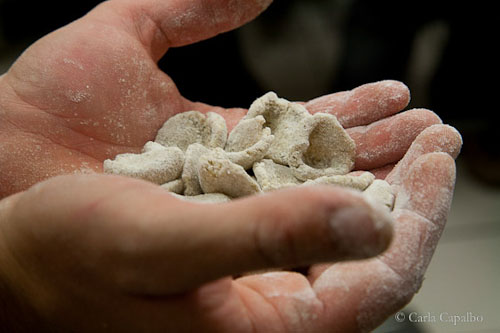
Chef Juri Chiotti's handmade cruzet pasta
At my friend and fellow food writer Sue Style’s house in Alsace, it wasn’t so much pears as quinces that were on the menu. She’s a fabulous cook, and after a just-picked salad had prepared a golden tart of grated fresh quince. Outside her kitchen door was a crate piled high with the yellow fruit.
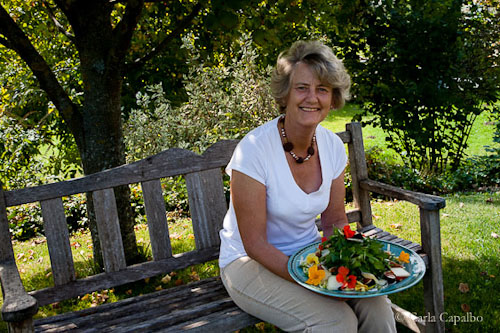
Sue Style in her garden with her home-grown salad
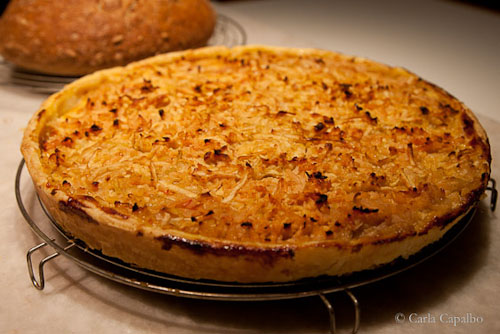
Sue Style's grated quince tart
“Can’t you take some with you when you leave?” she asked. “Our tree was full of them this year.” Hard to do much with quince when you’re on the road, but I suggested we try roasting them in foil over the hot coals after our steak was done. They came out soft and caramelized, like a misshapen baked apple. Or a pear.
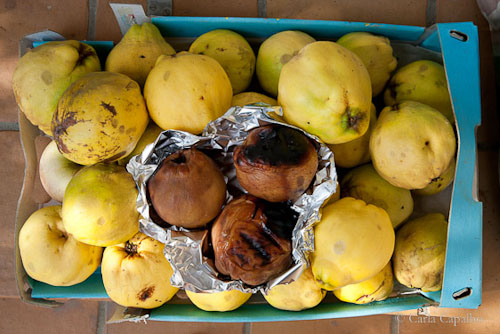
Quince, raw and roasted

